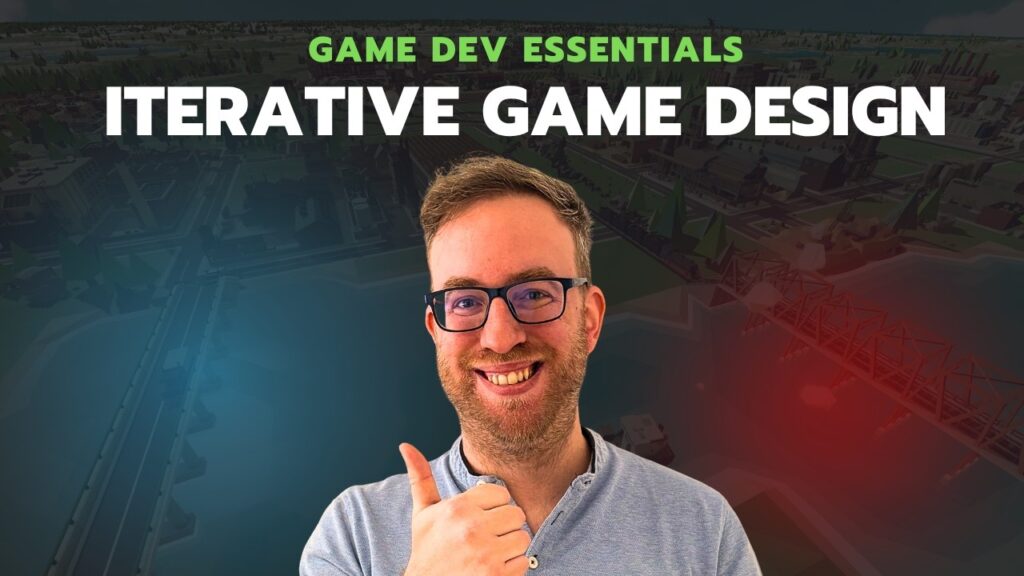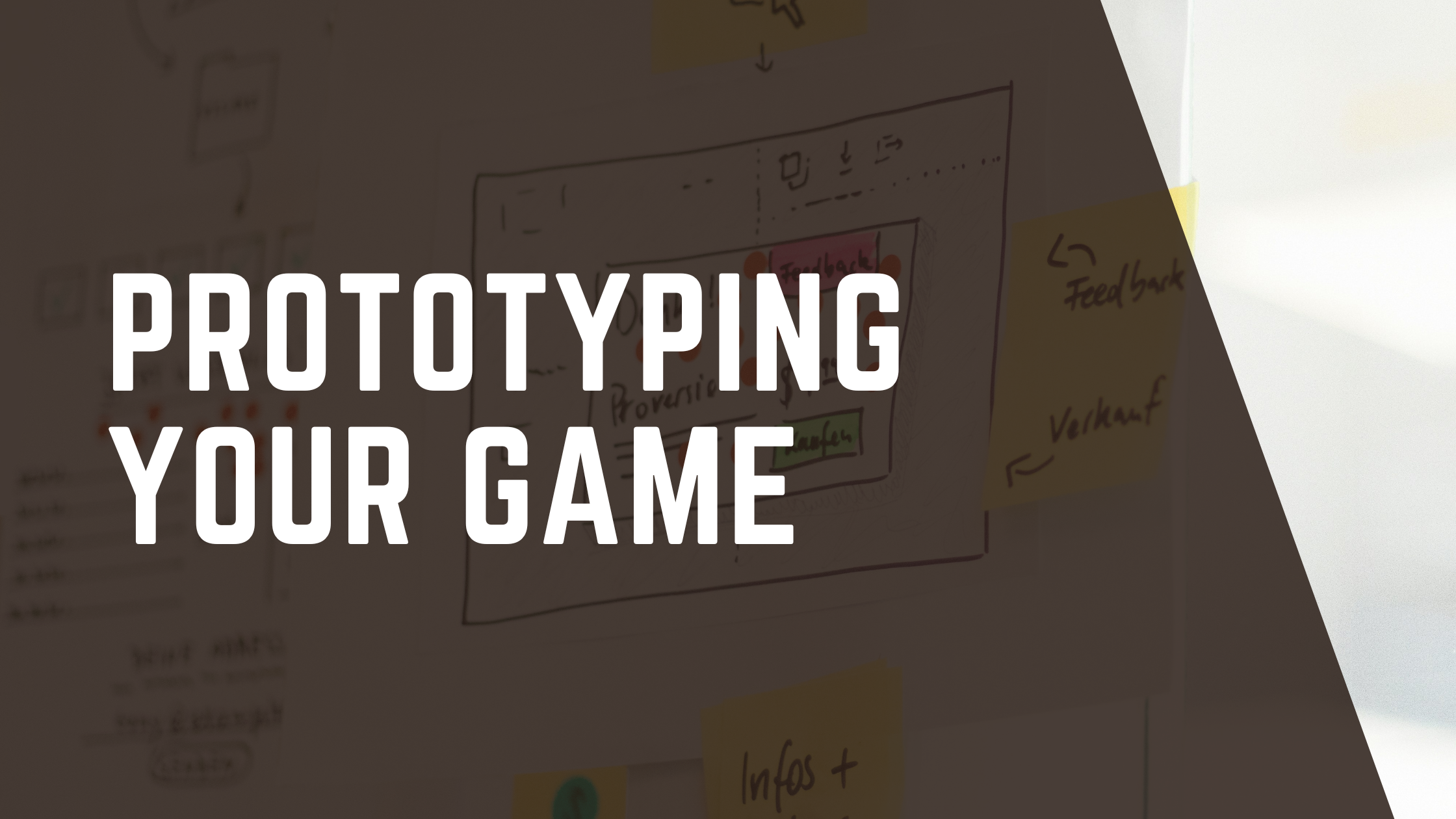Every great game starts as an idea: but ideas mean nothing until they’re tested. Prototyping is how you turn that concept into proof. It’s where you find out if your mechanics are fun, your systems make sense, and your vision actually deserves a full production cycle.
In this guide, we’ll break down how to create game prototypes that are fast, focused, and genuinely useful – even if you’re working solo or on a tight schedule.
Why Prototyping Matters

I go into more detail about why prototyping matters in this video over on my YouTube channel!
A prototype immediately tells you “should we build this?” before you commit months (or years) to full production.
Prototyping reduces risk by exposing flaws early: weak mechanics, clunky pacing, confusing systems; all the stuff that’s easy to ignore when you’re just imagining your game. It lets you find the cracks before you begin building the foundation.
A prototype is not a smaller version of your game: instead, it’s a disposable experiment designed to test one clear idea. When done right, it saves you time, money, and a ton of frustration later in development.
Define the Question Before You Build
Every prototype starts with a question – not a list of features. The biggest mistake new devs make is jumping straight into building before they’ve decided what they’re actually trying to learn. Your focus should be on testing one specific thing to see if it’s worth keeping.
That might mean figuring out if your jump mechanic feels satisfying, if your game loop creates tension, or if your control scheme makes sense on a controller instead of a mouse. Whatever it is, narrow your focus down to one or two clear questions.
A prototype without a question is pointless. Every hour you spend should move you closer to an answer. Treat each prototype like an experiment – have a hypothesis, test it, learn something, then move on to the next.
Keep It Ugly, Keep It Fast
Good prototypes are ugly, but that’s not an insult.
When you’re prototyping, polish is your priority. The second you start caring about how something looks, you’ve stopped focusing on how it feels. Greyboxes, cubes, and stick figures should be what you’re working with. The purpose at this point is to test mechanics, not art direction.
The faster you can throw something together and get it playable, the better. If it breaks, great. If it works, even better: you’ve got a mechanic you can dive into further. Either way, you win insight into the state of your game.
Think of it like sketching before painting. You’re not wasting effort making it pretty because this sketch will likely end up in the bin once it’s done its job. If your prototype looks too good to throw away, you probably spent too long making it.
Test, Observe, Iterate
Once your prototype exists, it’s time to hand it over and keep your mouth shut.
I’ve talked about the importance of feedback many times in the past. Don’t explain how it works, don’t guide the player and definitely don’t defend your choices. Just watch how they move, where they hesitate, when they get confused. Every stumble tells you where your design isn’t as clear as you thought.
Testing definitely isn’t about proving you’re right. It’s about discovering what you missed. I’ve talked about what the backbone of game design is, but Iteration is the real heart of prototyping. Make sure you build fast, test often, and make small adjustments based on what you see.
If your players are bored, dig into why. If they’re smiling, figure out what moment caused it and double down. Keep looping until the mechanic feels right. A “failed” prototype that teaches you something is more valuable than one that gets polite praise and no real insight.
When to Stop Prototyping
Every prototype has an expiration date. You’re done when your original question has a clear answer – not when the prototype “feels finished.” If you set out to test whether a jump mechanic feels good, and after a few tweaks it finally does, stop there. You’ve learned what you needed. Anything past that is polishing a temporary object.
The same goes if the answer is “no.” If a system still feels clunky or unfun after several iterations, don’t force it. Scrap it, learn from it, revise and move on. That’s what prototypes are for – to fail cheaply so your real project doesn’t fail expensively.
If your core loop feels satisfying even without proper art, sound, or UI, that’s your signal to move forward into production. Knowing when to stop is as important as knowing when to start. Endless tinkering can kill momentum just as fast as rushing ahead – causing burnout and unfocusing your progress.
Conclusion
Prototyping is your first reality check as a game developer: the moment where your ideas meet the limits of interaction, feedback and fun (reality). It’s not about making something pretty or publishable yet; it’s about making something real enough to test.
By keeping your prototypes fast, focused, and disposable, you save yourself months of wasted effort chasing unproven ideas. You aren’t going to get everything right on the first try, but you’ll learn from your mistakes and what doesn’t work.
Treat every prototype like an experiment. Ask a question, build a quick test, gather insight and move on. Do that enough times, and you’ll naturally filter out the weak ideas until only the strongest mechanics survive.
A good prototype doesn’t prove your game is finished – instead, it proves that it’s worth finishing.If you want to look more into the prototyping stage of game development, or even further at what comes next, check out my guide to all the stages of game development.


Leave a Reply